The ocean is a world of wonder, where creatures defy the odds with extraordinary abilities that keep them thriving in the deep, dark unknown. From the darkest trenches to sunlit coral reefs, these animals have evolved in ways that seem almost impossible.
Imagine a creature that can glow in the dark or one that can survive extreme pressure and freezing temperatures. The ocean’s residents are masters of adaptation, showcasing some of nature’s most mind-blowing survival tricks.
Whether they’re camouflaging in plain sight or using bizarre features to hunt, these ocean animals remind us that the underwater world is filled with more mysteries than we can possibly fathom.
Ready to dive into the ocean’s most extraordinary adaptations? Let’s explore 23 ocean animals whose survival strategies will leave you in awe.
Mimic Octopus
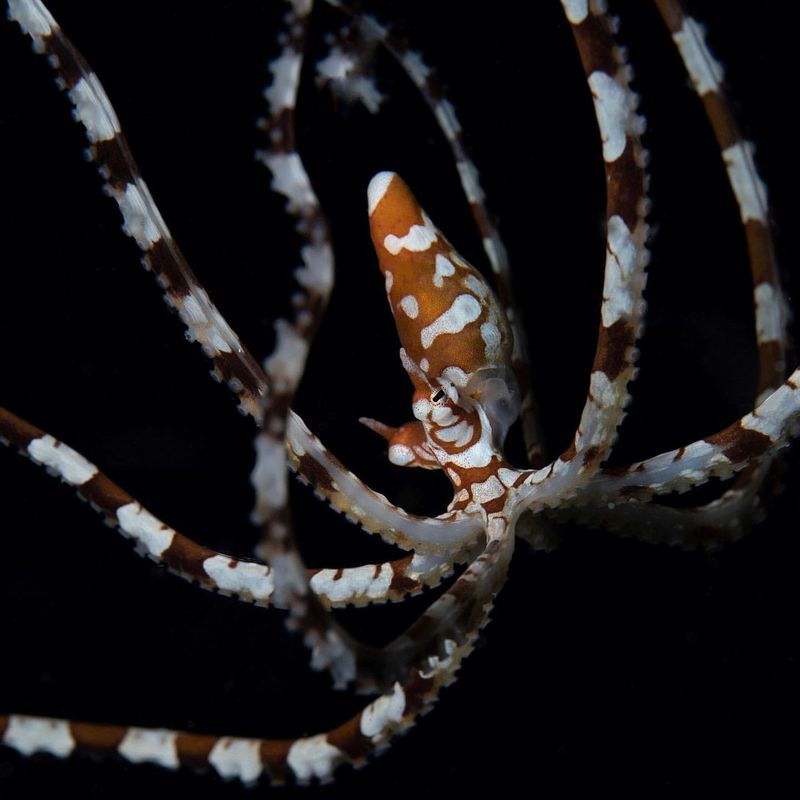
The mimic octopus is a master of disguise. It has the unique ability to imitate the appearance and movements of other sea creatures like lionfish, flatfish, and even sea snakes. This remarkable skill confuses predators and helps the mimic octopus avoid danger.
Residing mainly in the tropical waters of Southeast Asia, this clever cephalopod changes not only its color but also its texture to blend seamlessly with its surroundings.
Its intelligence and adaptability make it a fascinating subject for marine biologists, showcasing the power of evolution in crafting survival techniques.
Anglerfish
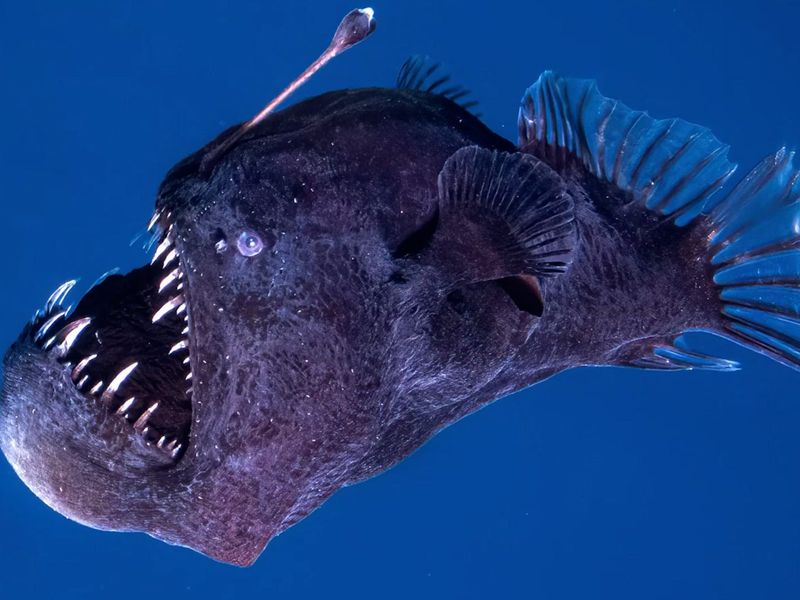
The anglerfish is a true wonder of the deep sea. Known for its bioluminescent lure, this fish attracts prey in the pitch-black ocean depths.
Females possess a long, rod-like extension from their heads, ending in a glowing tip that draws unsuspecting victims close for a quick meal.
Their enormous mouths and expandable stomachs allow them to consume prey nearly their own size, making them formidable hunters in the dark, cold depths where food is scarce.
Parrotfish
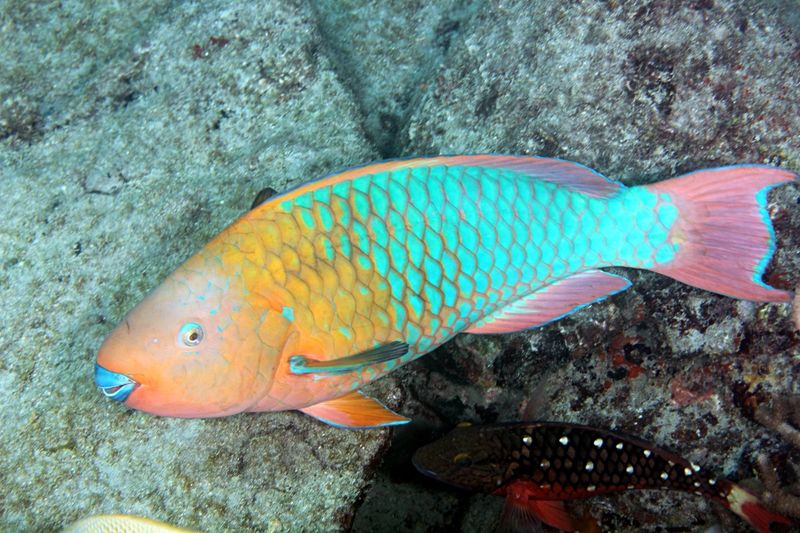
Parrotfish are vital to coral reef ecosystems. They possess strong beak-like mouths that scrape algae from corals, preventing overgrowth.
This feeding behavior plays a crucial role in maintaining coral health, as it encourages new growth and prevents the reef from being smothered.
By digesting the hard coral pieces, parrotfish produce sand, contributing to the formation of beautiful white beaches found in tropical regions around the world.
Leafy Sea Dragon

The leafy sea dragon is an expert in camouflage. Resembling floating seaweed, it blends seamlessly into its surroundings.
Found along the southern and western coasts of Australia, this species uses its leaf-like appendages to hide from predators.
Despite its delicate appearance, the leafy sea dragon is a resilient creature, showcasing the incredible adaptability of marine life in coastal habitats.
Pistol Shrimp
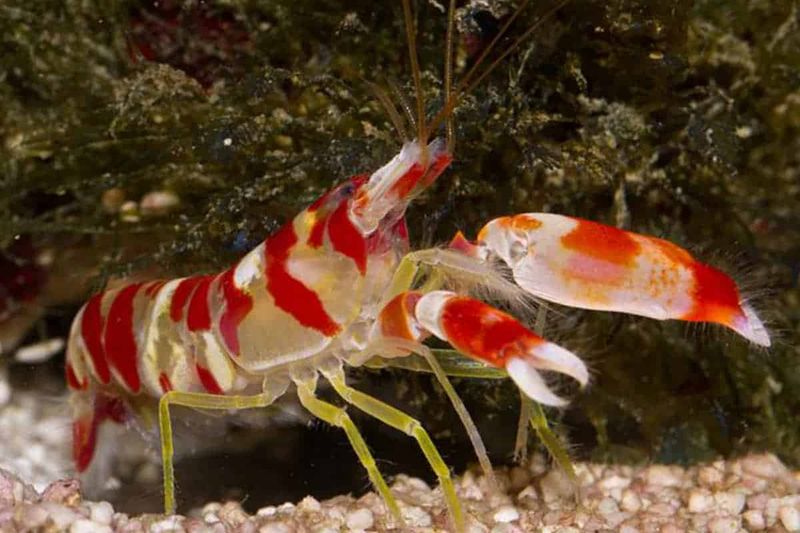
The pistol shrimp is one of the ocean’s loudest creatures. It snaps its claw shut with such force that it creates a bubble bullet.
This snap generates a sound reaching 218 decibels, temporarily stunning prey and deterring predators.
Despite being only a few centimeters long, the pistol shrimp’s explosive ability makes it a formidable hunter in its underwater environment.
Box Jellyfish
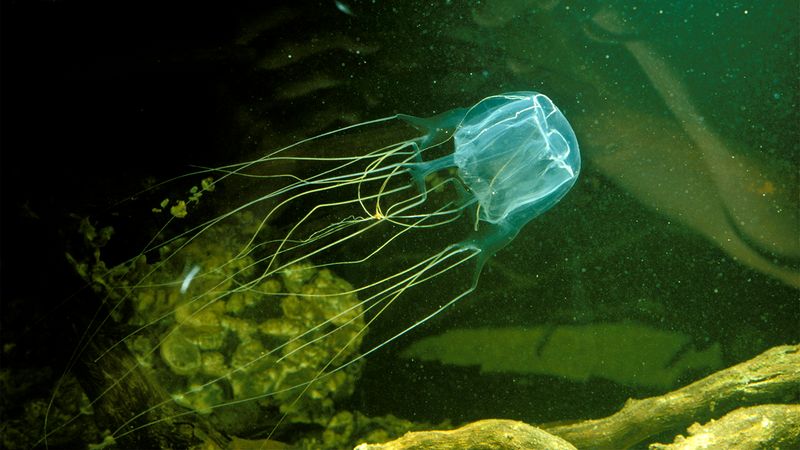
The box jellyfish is both beautiful and deadly. Known for its cube-shaped body and long, venomous tentacles, it resides mainly in the Indo-Pacific region.
The venom of the box jellyfish is one of the deadliest in the world, capable of causing heart failure in minutes.
Its translucent body makes it difficult to spot in the water, providing an effective defense against potential threats while hunting for prey.
Sea Otter

Sea otters are not just adorable marine mammals; they are also master tool users in the ocean world. Their ability to use rocks to smash open shellfish showcases their intelligence and adaptability. This behavior is not only a survival skill but also a cultural trait passed through generations.
Living in the cold waters of the Pacific, sea otters rely on their dense, water-repellent fur to keep warm. Unlike most marine mammals, they lack a blubber layer, but their fur is the densest in the animal kingdom, providing essential insulation.
The role of sea otters in maintaining kelp forest ecosystems is crucial. By preying on sea urchins, they prevent these creatures from overgrazing kelp forests, thus supporting biodiversity.
Their presence demonstrates the interconnectedness of marine life and the importance of each species in maintaining ecological balance.
Moray Eel
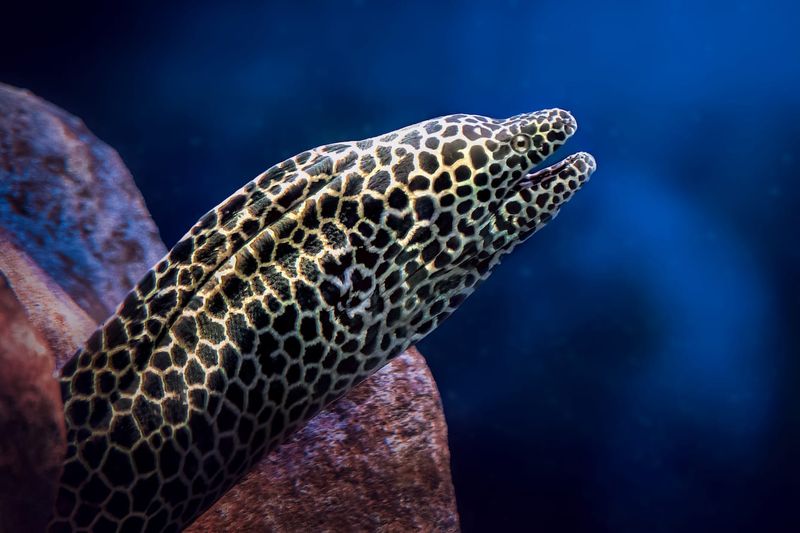
Moray eels are stealthy predators of the reef. With their long, snake-like bodies, they hide in crevices and ambush unsuspecting prey.
Their jaws are equipped with sharp teeth and a secondary set of jaws called pharyngeal jaws, helping them catch and consume prey efficiently.
This unique adaptation is a testament to the diverse and fascinating evolution of marine predators.
Humpback Whale

Humpback whales are known for their haunting songs and acrobatic breaches. These gentle giants migrate over vast ocean distances, feeding primarily on krill and small fish.
Their long pectoral fins and unique body shape allow them to perform extraordinary underwater acrobatics.
Humpbacks use bubble net feeding, a cooperative hunting technique, showcasing their intelligence and social nature in the marine world.
Nudibranch
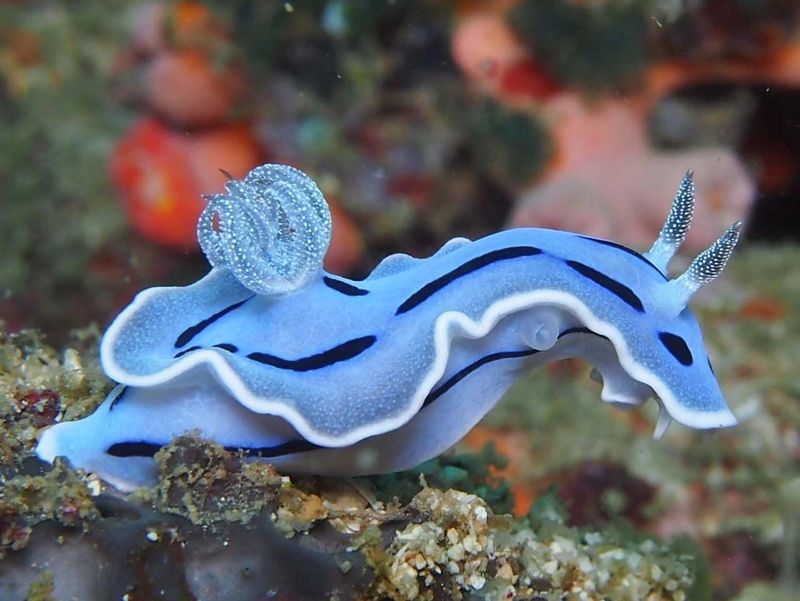
Nudibranchs are the ocean’s most colorful creatures. These soft-bodied mollusks come in a stunning array of colors and patterns.
Found in oceans worldwide, they feed on sponges and other marine invertebrates, often taking on the toxins of their prey.
This absorption of toxins serves as a defense mechanism, deterring predators and ensuring their survival in vibrant coral reef ecosystems.
Sea Turtle
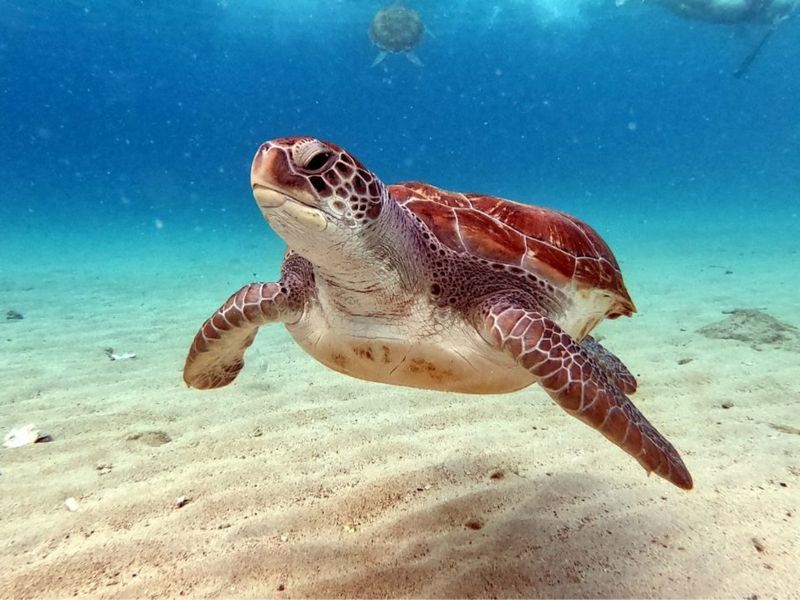
Sea turtles are ancient mariners of the ocean. With streamlined shells and powerful flippers, they travel thousands of miles across open seas.
These reptiles have a strong homing instinct, returning to the same beaches where they were born to lay their eggs.
Despite facing threats from pollution and habitat loss, their resilience highlights the enduring nature of these magnificent creatures.
Giant Squid
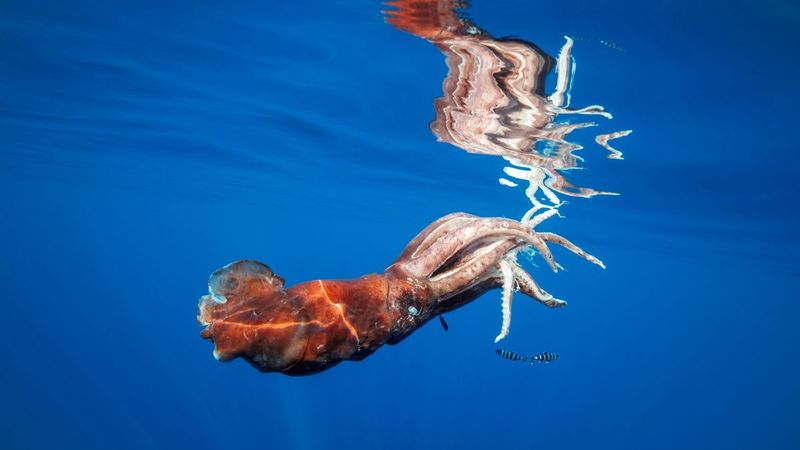
The giant squid is an elusive deep-sea dweller. With eyes the size of dinner plates, it navigates the ocean’s dark depths.
Its long tentacles are armed with powerful suckers, capturing prey with precision.
Despite being rarely seen, the giant squid remains a subject of intrigue and fascination, embodying the mysteries of the ocean’s unexplored reaches.
Flying Fish
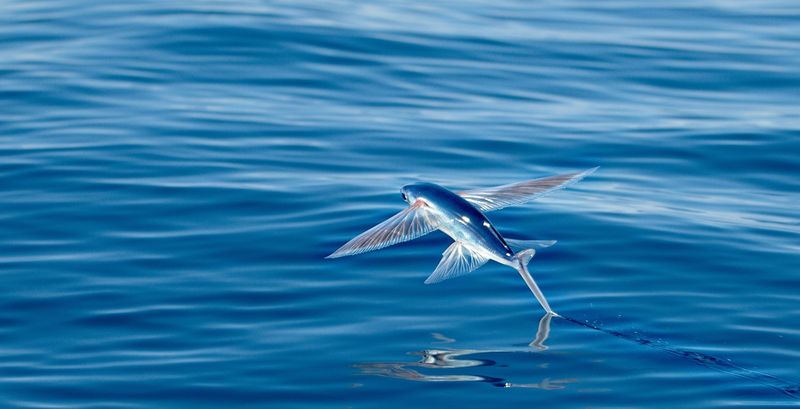
Flying fish are nature’s aviators of the sea. Using their uniquely adapted fins, they leap from the water and glide for distances up to 200 meters.
This behavior allows them to escape predators and navigate their open ocean habitat.
Found in warm seas around the world, their aerial prowess is a remarkable adaptation, balancing life between the ocean’s surface and sky.
Stonefish
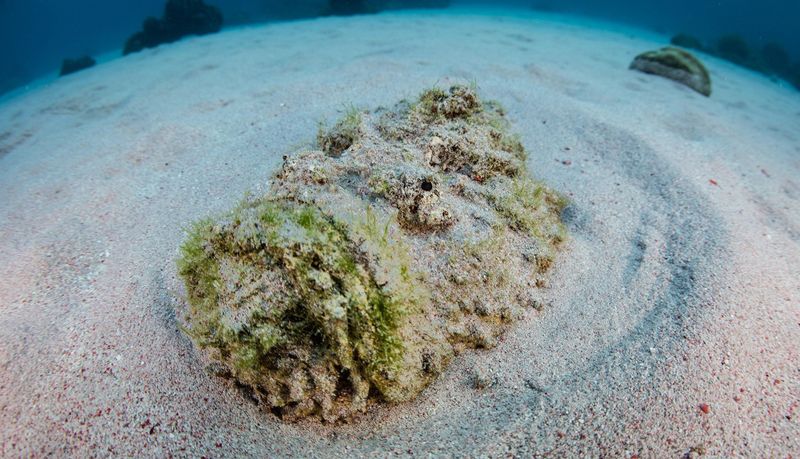
The stonefish is the ocean’s master of camouflage. Residing on the seabed, it mimics the appearance of a stone, waiting for unsuspecting prey.
Its dorsal spines contain potent venom, making it one of the most dangerous fish in the ocean.
This deadly adaptation ensures its survival in the competitive marine ecosystem, demonstrating the intricate balance of predator-prey relationships.
Dumbo Octopus
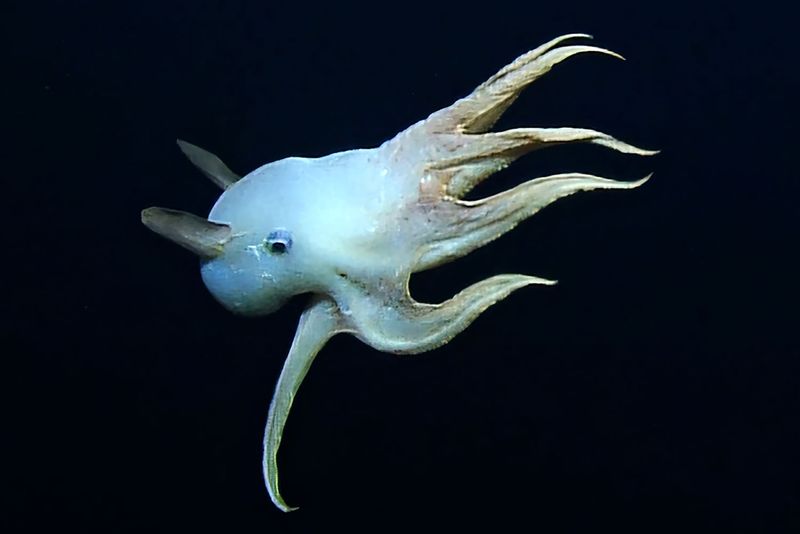
The dumbo octopus is a deep-sea enigma. Named for its ear-like fins, it navigates the ocean depths with grace.
These octopuses inhabit regions up to 13,000 feet below the surface, adapting to the cold, high-pressure environment.
Their unique appearance and elusive nature make them a captivating subject for those interested in the wonders of deep-sea life.
Hammerhead Shark
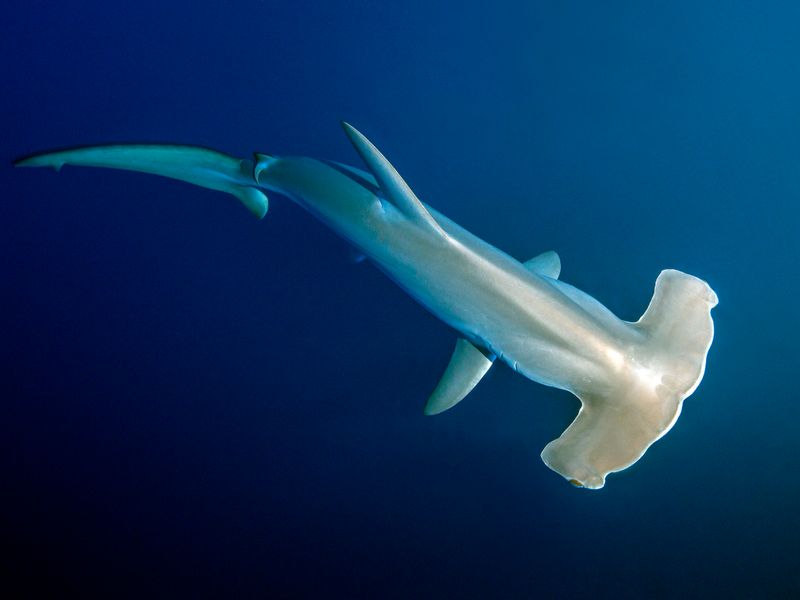
Hammerhead sharks are known for their distinctive head shape. This adaptation provides enhanced sensory perception, allowing them to detect prey buried in the sand.
Found in warm waters worldwide, hammerheads are efficient hunters, using their wide-set eyes for better vision.
Their social behavior and unique adaptations make them a fascinating study in marine biology.
Sea Cucumber

Sea cucumbers are essential to ocean ecosystems. These tubular creatures scavenge the sea floor, recycling nutrients and supporting marine life.
They possess the remarkable ability to expel their internal organs as a defense mechanism, which they later regenerate.
This unique adaptation ensures their role in maintaining the health of ocean habitats, highlighting the interconnectedness of marine life.
Portuguese Man O’ War

The Portuguese Man O’ War is a misleadingly beautiful ocean drifter. Often mistaken for a jellyfish, it is actually a colony of specialized polyps.
Its long tentacles deliver a painful sting, used to capture prey and defend against predators.
Floating on the ocean surface, this creature demonstrates the complexity of marine life and the adaptation of colonial organisms.
Blobfish
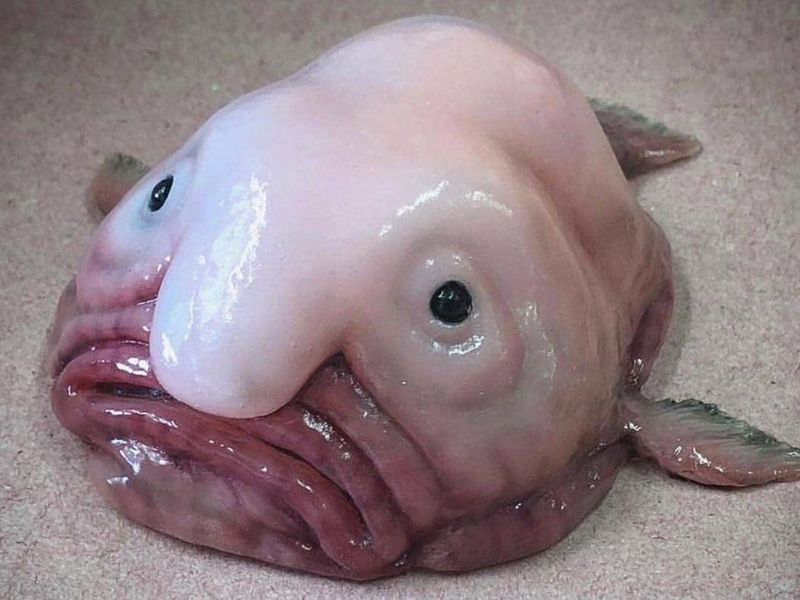
The blobfish is a peculiar inhabitant of the deep sea. Its gelatinous body allows it to withstand the high pressures of its underwater environment.
Living at depths where other fish struggle to survive, the blobfish has minimal muscle, conserving energy in its sparse habitat.
Its unusual appearance has captivated imaginations, making it a symbol of the ocean’s strangest creatures.
Goblin Shark

The goblin shark, often referred to as a “living fossil,” dwells in the deep sea, where it remains a mysterious and rarely seen predator. Its most distinctive feature is its elongated, flattened snout, which is equipped with electroreceptors that detect prey in the dark ocean depths.
This deep-sea shark has an unusual jaw mechanism that allows it to thrust its mouth forward to snatch prey with rapid precision. This adaptation is a perfect example of evolution at work in the deep sea, where food is scarce, and efficient hunting is vital.
Despite its frightening appearance, the goblin shark poses little threat to humans due to its deep-sea habitat. Their ancient lineage and unique adaptations make them a fascinating subject of study for marine biologists and enthusiasts alike.
Clownfish
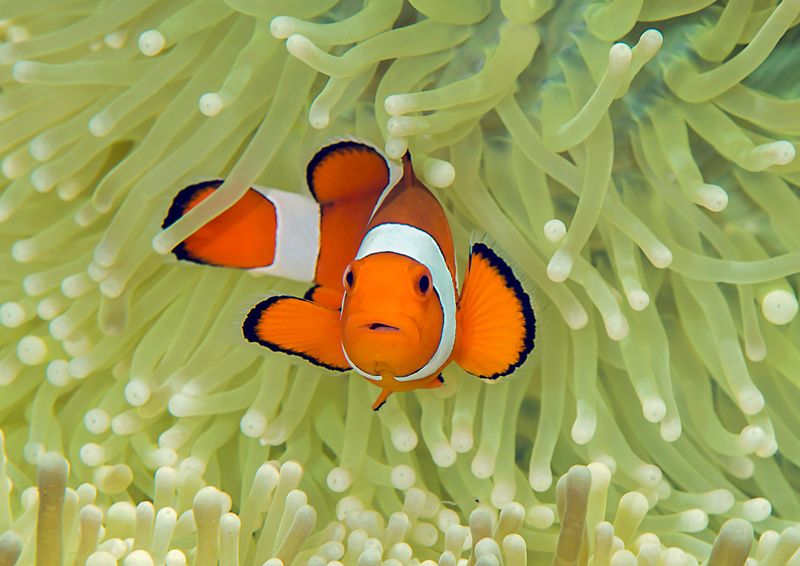
Clownfish are iconic reef residents. Known for their symbiotic relationship with sea anemones, they find protection among the stinging tentacles.
This mutualistic bond provides them with shelter and safety, while the anemone benefits from the nutrients in clownfish waste.
Their bright colors and unique partnership exemplify the harmony that can exist in nature’s diverse ecosystems.
Blue Ringed Octopus
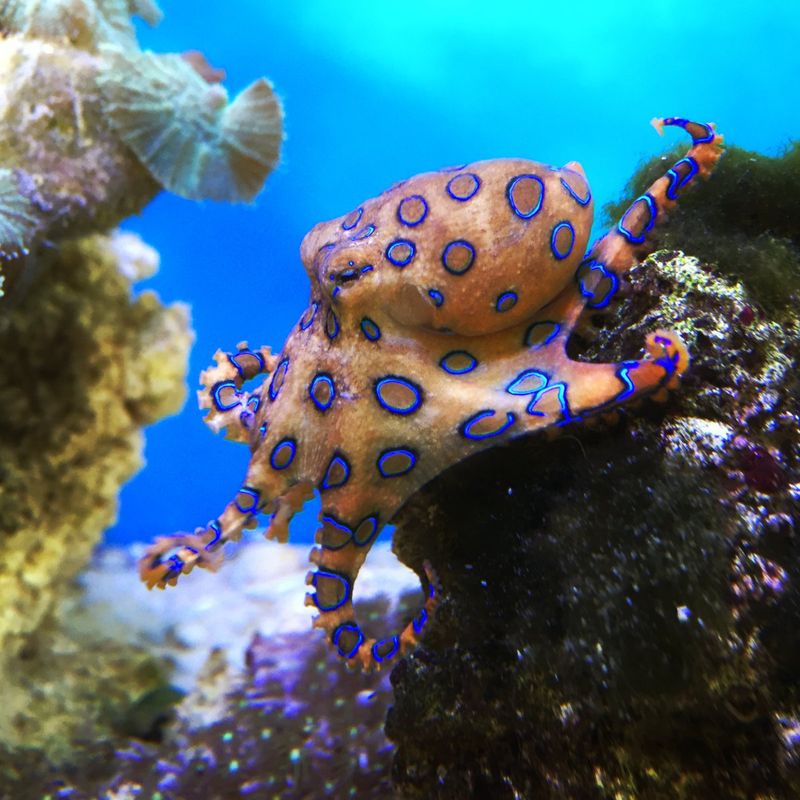
The blue-ringed octopus is a small but formidable predator. Its vibrant blue rings are a warning of its potent venom, which can be fatal to predators and humans alike.
Found in the Pacific and Indian Oceans, it uses its venom to subdue prey and deter threats.
Despite its small size, the blue-ringed octopus’s striking appearance and deadly defense highlight the ocean’s intricate food webs.
Beluga Whale

Beluga whales are known for their unique vocalizations and social behavior. Often called “canaries of the sea,” they communicate with a range of sounds.
Inhabiting Arctic and sub-Arctic waters, their white coloration provides camouflage among the ice.
As highly social animals, belugas form close-knit pods, showcasing the complexity of marine mammal societies and the importance of communication in survival.

